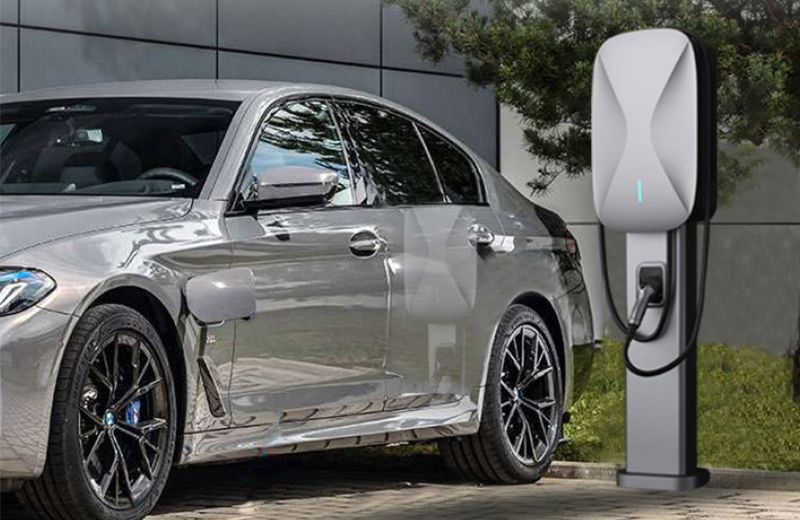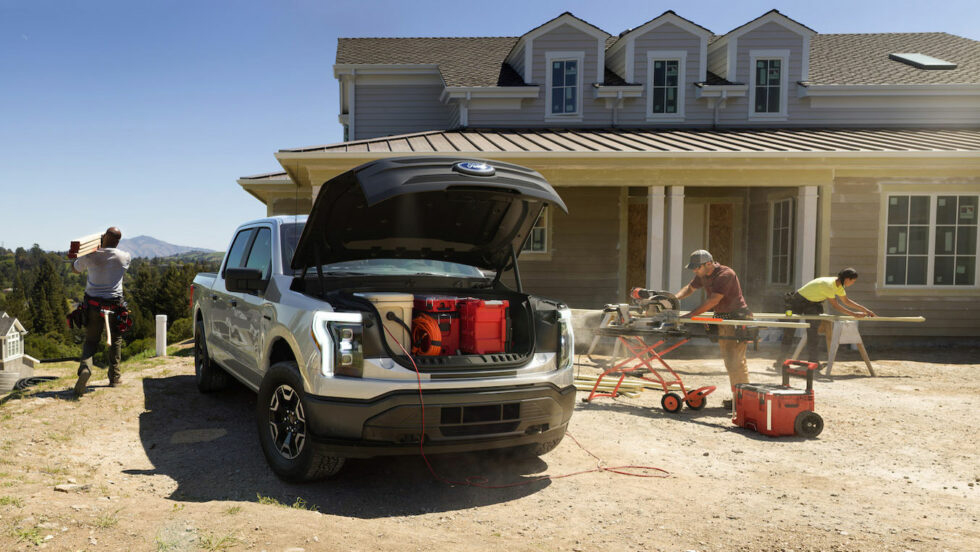
Vehicle-to-Grid (V2G): The Future of EV Charging and a Smarter Energy Grid
Vehicle-to-Grid technology is redefining the role of electric vehicles, turning them into dynamic energy assets that benefit drivers, utilities, and the planet.

Increasingly, electric vehicles can be charged in both directions – that is, with electricity fed back into the grid or made available to other consumers. What’s the point?
Americans are a nation of sports and leisure enthusiasts. Whether it’s Fort Lauderdale,27 Palmetto or Mount Auburn – weekends are all about the countryside, the woods and the sea. Motorboats, stand-up paddleboards, cooler bags or air mattresses for camping tents all scream the need for electric assistance, which in the past usually had to be provided by a generator loaded in the loading bay – up or in the trunk of an SUV. On short-term job sites, even artisans often couldn’t live without electricity from diesel or gasoline units.
But many new electric vehicles are ending the urge to carry a generator. That’s because they can be charged in both directions. This means that the vehicle’s battery can not only be charged at a charging station or fast charger, but that the car is also happy to release much of the energy stored in the battery when necessary.
The Volkswagen ID.5, which will be the Volkswagen Group’s first electric vehicle, can also feed the power stored in the battery into the home network via a DC wall box. It is already stored in the software and the wall box will appear later.
On the one hand, this is possible if electricity consumers must be powered on the road, or if the car becomes a regular part of daily electric life, which also includes houses or apartments and workplaces.
However, bidirectional charging is most useful in your own home. Electric cars can deliver power they don’t need to the home network (car-to-home) and in the future can provide power to stabilize the grid.
In earthquake-prone Japan, the practice has been around for a long time: the CHAdeMO charging standard there was designed for bi-directional charging from the start. Electric vehicles from Nissan and Mitsubishi are already part of the emergency power supply, used not only in private homes but also in public facilities such as hospitals.
In Europe, on the other hand, standards had to be developed for bidirectional charging in the first place. That’s why electric vehicles are only now becoming part of the smart grid: in an era of energy revolution and increased risk of power outages, they should act as energy buffers. And not only in Italy.

Source: Jointcharging.com)
Volkswagen is now offering this technology for its ID.5 electric car with a large 82 kWh battery pack – Audi and Skoda models will receive it at a later date. The technology is already installed in the car and can be activated by the owner at any time via data transmission (wireless updates). Power transmission and communication with the technology center takes place via a special DC wall box for bi-directional charging. However, it is not yet available and will be provided by partners during the year.
Another prerequisite for smart charging in the home is a home energy management system. It knows what consumers need and can therefore manage their power intelligently. This allows owners of PV systems to easily charge with self-generated solar power. The question remains whether many people would prefer to have their own electric vehicle in their garage with a fully charged battery pack and ready for a long-distance start.
For these customers, the feature is either completely uninteresting or they will enjoy the possible flow of electricity while on the road. Anyone who takes a tent camping or finds an electric car with a trailer hitch for their caravan should quickly learn to appreciate the bidirectional charging feature, as the vehicle’s battery pack can have no problem charging a coffee maker, electric pump or other consumer power supply – no matter where you are right now.
For example, two new electric vehicles, the Hyundai Ioniq 5 and the Kia EV6, allow for bi-directional charging. A battery mounted on the floor of the vehicle can be used to supply 110 or 220 volt AC power to external electrical equipment. If necessary, an emergency charging cable can also be used to charge another electric vehicle.
This bi-directionality is achieved through a specially developed charge control unit (Integrated Charge Control Unit), which, as a further development of the on-board charger, enables two charging directions. ICCU has a new “Vehicle-to-Load” function that draws power from the vehicle battery without additional components. The V2L function, for example, delivers up to 3.6 kW of power and can run a medium-sized air conditioner and a 55-inch TV for up to 24 hours. This is until up to 80% of the energy stored in the vehicle battery has been used.
With the help of an adapter, the Kia EV6’s charging port becomes a household outlet that can be used, for example, to operate a coffee machine or charge the battery of a laptop. Other electric vehicles can also charge their batteries here in case of emergency.
In the U.S., the Ford F-150 Lightning will be one of the first production models to feature bi-directional charging technology. In the U.S., with repeated power outages due to snowstorms and tornadoes, and with a desolate power grid, a full-size pickup like the Ford F-150 Lightning can provide such an important source of energy for families.
To that end, Ford has developed what it calls the Smart Backup Power Kit, first used in the F-150 Lightning, which gives customers the ability to use its all-electric pickup’s bi-directional power technology to power their homes during power outages – whether the family occupants need to take shelter in a storm or keep cool during a heat wave. So far, most homeowners have installed impressive emergency generators in their garages or basements for such purposes, and then used them.

The F-150 Lightning’s large battery pack can store up to 131 kWh of energy and deliver up to 9.6 kW of power-cleaner, quieter and more efficient than diesel or gasoline-powered generators, and with a larger capacity system than many home storage devices. With intelligent backup power and home integration systems, the F-150 Lightning automatically turns on when the power grid fails. Once power is restored, the system will automatically switch back to the main power source.
Based on the average U.S. home consuming 30 kilowatt hours per day, the battery-equipped F-150 Lightning can provide up to three days of complete power to a large battery bank. If you’re conservative with your house power consumption, you can even be self-sufficient for more than a week.

Vehicle-to-Grid technology is redefining the role of electric vehicles, turning them into dynamic energy assets that benefit drivers, utilities, and the planet.

At this ACT Expo, Joint Tech will unveil its latest advanced commercial Level 2 charging solution, designed to enhance the user experience. Meanwhile,powered by new technology, our commercial chargers effectively address multiple challenges encountered in real-world applications.

The new tariffs imposed by the United States have once again caused global economic tension.In order to respond to the impact on the global supply chain, Joint new factory in Malaysia offers favorable tax rates.